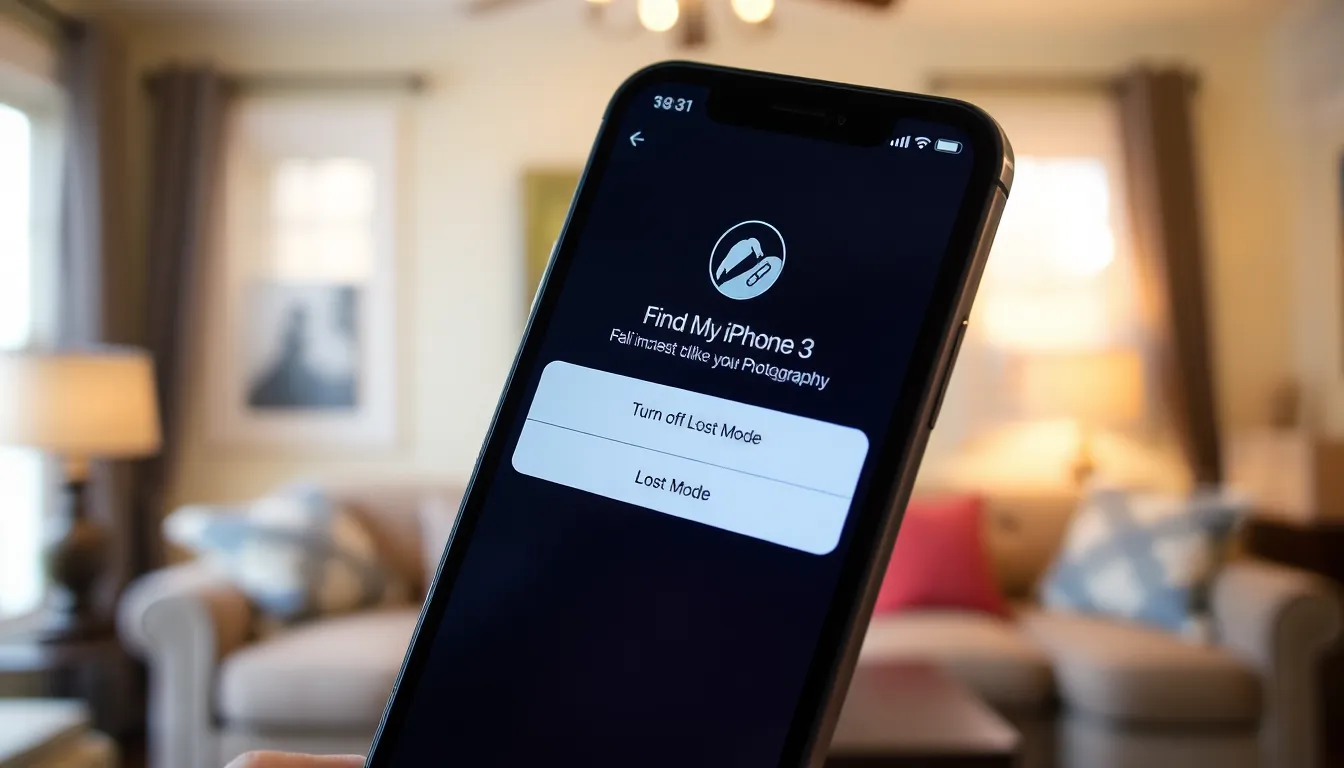Table of Contents
TogglePicture this: you’re frantically searching for your iPhone, only to find out it’s in Lost Mode. Panic sets in as you wonder if it’s lost for good or just playing hide and seek. Don’t worry; it happens to the best of us. Thankfully, taking your iPhone off Lost Mode is easier than finding a needle in a haystack—especially when you know the right steps.
Understanding Lost Mode
Lost Mode serves as a protective feature for an iPhone when it gets misplaced. Its primary purpose is to help users locate their devices while keeping personal information secure.
What Is Lost Mode?
Lost Mode locks the device and displays a custom message on the screen. Users can include contact information for anyone who finds the phone. The feature prevents unauthorized access to the device and tracks its location on a map. Activation occurs through the Find My app or iCloud website. Once engaged, the iPhone automatically sends the last known location to help locate it.
Why Use Lost Mode?
Utilizing Lost Mode offers numerous benefits, primarily phone security and privacy. It deters unauthorized access by locking the device, safeguarding sensitive data. This mode tracks the phone’s position, allowing for easier recovery. Users can receive updates about the device’s location even if it moves. These features make Lost Mode essential for managing lost devices effectively.
Steps to Take iPhone Off Lost Mode

Removing an iPhone from Lost Mode can be done quickly and easily. Users can follow the steps below using the Find My iPhone app or the iCloud website.
Using Find My iPhone
Open the Find My iPhone app on another Apple device. Sign in with the Apple ID associated with the lost iPhone. Select the device from the list of available devices. Tap “Actions” at the bottom of the screen, followed by “Turn Off Lost Mode”. Enter the device’s passcode if prompted. The iPhone will then exit Lost Mode, restoring full access.
Through iCloud Website
Visit the iCloud website and log in with the same Apple ID used on the iPhone. Click on the “Find iPhone” option. Select “All Devices” at the top and choose the locked device. After selecting the device, click on “Stop Lost Mode.” Enter the passcode when required. This action will deactivate Lost Mode and give complete access to the iPhone once again.
Troubleshooting Common Issues
Common issues might arise when trying to take an iPhone off Lost Mode. Addressing these challenges can make the process smoother.
iPhone Stuck in Lost Mode
An iPhone may seem stuck in Lost Mode due to network issues or incorrect credentials. Ensure the device is connected to Wi-Fi or has cellular data enabled. If the device remains locked, the user must double-check their Apple ID and password. Restarting the iPhone can also help refresh the settings, potentially resolving the problem. If prompted for a passcode, input the correct one linked to the device. Those who still experience difficulties should consider visiting an Apple Store or contacting Apple Support for assistance.
Difficulty Accessing Account
Accessing the associated Apple ID account can sometimes present challenges. If a user forgets their password, they can initiate a password reset through the Apple ID account page. Verification via trusted devices may be necessary. In case of enabled two-factor authentication, users should have their verification codes handy. Registering the device with iCloud is essential, as it allows for recovery options. For persistent access issues, the user should reach out to Apple Support for further guidance on regaining account access.
Tips for Future Prevention
Taking proactive steps can help prevent issues with Lost Mode on an iPhone. Implementing these strategies enhances security and reduces stress in emergencies.
Enabling Two-Factor Authentication
Two-factor authentication adds an extra layer of security to Apple ID accounts. When set up, it requires a verification code from a trusted device each time someone tries to access the account. This feature helps prevent unauthorized access and enhances protection against theft. Users can easily enable it by going to Settings, tapping on their name, selecting Password & Security, and following the prompts. Keeping this setting active significantly reduces the risk of someone disabling Lost Mode without permission.
Regularly Updating iOS
Regularly updating iOS ensures that the device has the latest security features and bug fixes. Each update includes patches for vulnerabilities that hackers could exploit. Users can check for updates by navigating to Settings, selecting General, and tapping on Software Update. Installing updates promptly helps maintain the iPhone’s performance and can prevent access issues related to Lost Mode. Prioritizing these updates keeps devices functioning smoothly and securely.
Removing an iPhone from Lost Mode is a simple yet vital process that restores access to the device. By following the outlined steps through the Find My iPhone app or iCloud website users can quickly regain control and peace of mind.
It’s essential to ensure a stable internet connection and verify Apple ID credentials to avoid common pitfalls. For those facing ongoing challenges it’s advisable to seek assistance from Apple Support.
Taking proactive measures such as enabling two-factor authentication and keeping iOS updated can significantly enhance security and prevent future issues. With these strategies in place users can navigate the complexities of Lost Mode with confidence.




